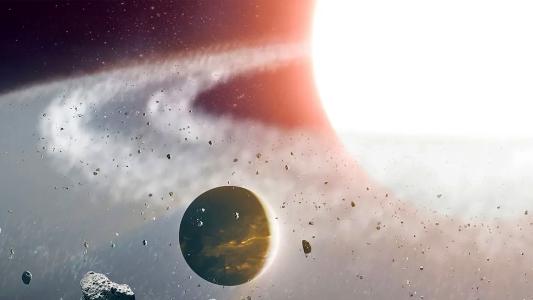This is T-Minus, where we count down the biggest developments in space, from new rocket launches to discoveries that advance our understanding of the universe and our place in it. Humanity is reaching new heights in space exploration. Make sure you’re part of the journey by subscribing here.


NASA extends New Horizons
In January 2006, NASA launched the New Horizons mission, sending a spacecraft on a 9-year journey toward the outer edges of the solar system so that it could be the first to study Pluto up close (this was just eight months before Pluto was downgraded to dwarf planet status).
When its study of Pluto wrapped in 2016, NASA extended the New Horizons mission, sending it deeper into the Kuiper Belt where it performed a flyby of an icy world called “Arrokoth.”
Since then, New Horizon mission leaders have been hopeful that they’d be able to identify another Kuiper Belt object to study up close before the spacecraft exits the solar system — but those hopes were almost dashed when NASA announced plans to cut the mission’s budget and cease its exploration operations in 2024.
The decision drew significant criticism from the space community, and on September 29, NASA announced an updated plan that extends New Horizons’ operations budget until the spacecraft exits the Kuiper Belt in 2028 or 2029.
“We are excited to continue the exploration of the Kuiper Belt and the outer heliosphere, two amazing science areas NASA is pioneering!” Alan Stern, New Horizons’ principal investigator, tweeted in response to the update.


Percy spots a dust devil
Dust devils — tornado-like vortices of dust and dirt — are common on Earth and Mars, but while ours rarely soar higher than 1,000 feet, dust devils can be nearly 5 miles tall on the Red Planet, carrying dust high into the Martian atmosphere.
Because scientists can’t predict when and where a dust devil is going to sprout up, NASA has its Mars rovers periodically take images all around themselves in the hopes of capturing ones to study — and it recently got lucky.
On September 29, NASA announced that the Perseverance rover had taken 21 images of a dust devil moving at an estimated speed of 12 miles per hour across Mars’ Thorofare Ridge. Based on those images, it believes this twister was likely 1.2 miles tall and 200 feet wide.
Studying footage like this could help NASA understand how dust devils might influence Mars’ climate and potentially make it possible to one day predict when and where they’re most likely to occur — helping NASA ensure its astronauts and equipment aren’t around when they do.


Frank Rubio returns home
After spending 371 consecutive days in space — a record for an American — NASA astronaut Frank Rubio finally got his feet back on terra firma on September 27, when a Soyuz capsule carrying him and Russian cosmonauts Sergey Prokopyev and Dmitri Petelin landed in Kazakhstan.
Rubio’s mission aboard the International Space Station was supposed to last six months — the standard length for NASA astronauts on the ISS. However, in December 2022, ground teams noticed that the docked Soyuz capsule that had brought him and the Russian crew members to the ISS a few months prior was leaking coolant.
After further investigation, Roscosmos determined that the coolant leak was likely caused by a collision with a micrometeoroid and that the spacecraft was no longer viable to return the crew to Earth. That led to the unexpected mission extension, which forced Rubio to miss several family milestones, including one of his daughters heading off to West Point.
“Our astronauts make extraordinary sacrifices away from their homes and loved ones to further discovery,” said NASA Administrator Bill Nelson. “NASA is immensely grateful for Frank’s dedicated service to our nation and the invaluable scientific contributions he made on the International Space Station.”
We’d love to hear from you! If you have a comment about this article or if you have a tip for a future Freethink story, please email us at [email protected].






